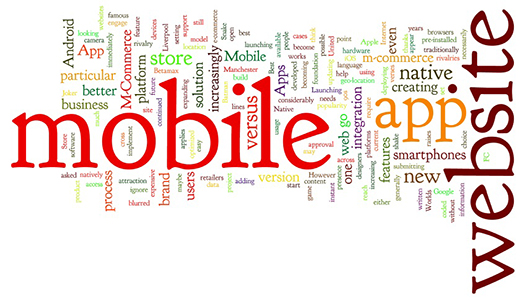According to Cisco Visual Networking Index (VNI) Global Mobile Data Traffic Forecast Update 2013-2018,
Global mobile data traffic grew 81% in 2013. Global mobile data traffic reached 1.5 exabytes* per month at the end of 2013, up from 820 petabytes per month at the end of 2012.
Global mobile data traffic will increase nearly 11-fold between 2013 and 2018. Mobile data traffic will grow at a compound annual growth rate (CAGR) of 61% from 2013 to 2018, reaching 15.9 exabytes* per month by 2018.
* One Exabyte (EB) = One Billion Gigabytes (GB)
These are staggering figures, considering only 10 years ago the idea of a mobile phone with Internet was, well, too geeky! Nevertheless, the task we have right now is to make sure we don’t get left behind. So let’s quickly look at some of the key pros and cons of mobile websites and mobile apps.
Mobile/Responsive Design Websites
These websites can be either custom built mobile only websites or responsive design websites that automatically modify based on the device used to view them viz. desktops, mobiles and tablets.
Pros
Cons
Mobile Apps
Well there is one for everything, isn’t there?
Pros
Cons
Of course, predictably, your choices will largely depend on the type of your business and products or services offered. Having both with a robust strategy can do wonders for most businesses. At the very least building a website with responsive design will ensure your presence on mobile platforms.
If you think this post was useful, please feel free to forward it along. On the other hand if you thought this was rubbish, make sure to give us a piece of your mind.
Global mobile data traffic grew 81% in 2013. Global mobile data traffic reached 1.5 exabytes* per month at the end of 2013, up from 820 petabytes per month at the end of 2012.
Global mobile data traffic will increase nearly 11-fold between 2013 and 2018. Mobile data traffic will grow at a compound annual growth rate (CAGR) of 61% from 2013 to 2018, reaching 15.9 exabytes* per month by 2018.
* One Exabyte (EB) = One Billion Gigabytes (GB)
These are staggering figures, considering only 10 years ago the idea of a mobile phone with Internet was, well, too geeky! Nevertheless, the task we have right now is to make sure we don’t get left behind. So let’s quickly look at some of the key pros and cons of mobile websites and mobile apps.
Mobile/Responsive Design Websites
These websites can be either custom built mobile only websites or responsive design websites that automatically modify based on the device used to view them viz. desktops, mobiles and tablets.
Pros
- Cheaper to build
- Do not require screen specific coding
- Work on virtually all platforms (Windows, Mac, iOS, Android, Blackberry etc.)
- Easy to update
- Easily discoverable
Cons
- User experience is generally average at best
- Poor user engagement
Mobile Apps
Well there is one for everything, isn’t there?
Pros
- Great user experience
- High user engagement
- Can capture detailed statistical data on users allowing better understanding of market trends and needs
- Allows personalised service
Cons
- Comparatively expensive to build. (AUD$5000 to AUD$150,000 depending on various requirements)
- Difficult and hence expensive to update or change
- Requires ongoing maintenance
Of course, predictably, your choices will largely depend on the type of your business and products or services offered. Having both with a robust strategy can do wonders for most businesses. At the very least building a website with responsive design will ensure your presence on mobile platforms.
If you think this post was useful, please feel free to forward it along. On the other hand if you thought this was rubbish, make sure to give us a piece of your mind.

 RSS Feed
RSS Feed